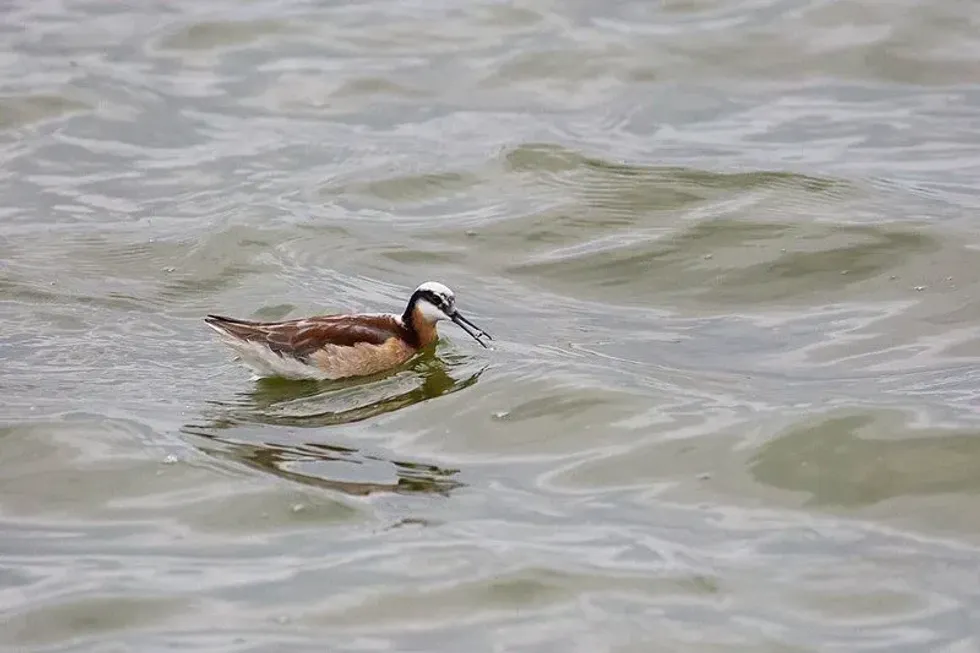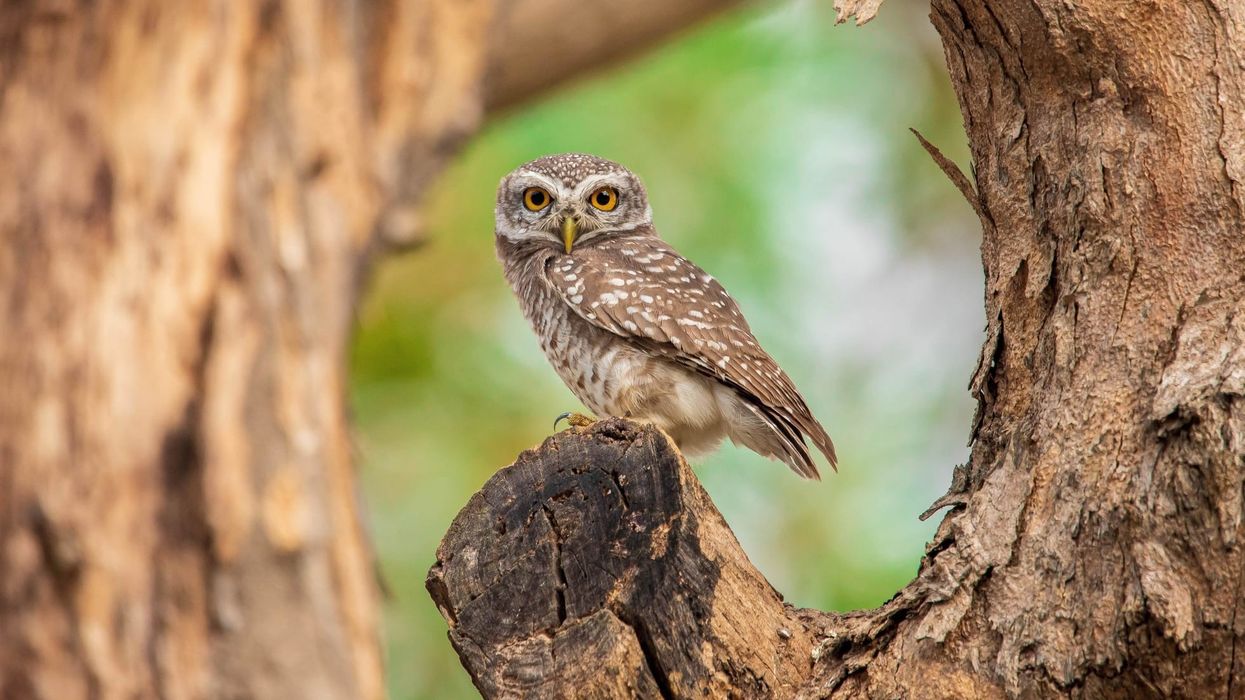Wilson's phalarope (Phalaropus tricolor) was first discovered by Louis Jean Pierre Vieillot in 1819. This bird belongs to the order Charadriiformes and Scolopacidae family.
These are North American birds who migrate to South America. The Mono Lake in California and the Great Salt Lake are hotspot places for this species of birds. These phalaropes have needle-shaped bills.
These birds have the ability to receive information about their habitats through smell. Wilson's phalaropes are polygamous species of birds where one female can mate with more than one male, and one male can mate with more than one female. The breeding grounds of this species are situated in the prairies, lakes, and marshes of the great plains.
The sex roles are shown to be reversed in Wilson’s Phalaropes. According to the IUCN list, Wilson’s phalaropes come under the least concern category.
Here are some of the most interesting facts about Wilson’s phalarope (Phalaropus tricolor) bird species. Afterward, do have a look at our other articles on swans and cranes as well.
Wilson’s Phalarope Interesting Facts
What type of animal is Wilson’s phalarope?
Wilson’s phalarope (Phalaropus tricolor) is a shorebird species of the Scolopacidae family. Wilsons are the largest phalaropes in the phalarope bird species.
What class of animal does Wilson’s phalarope belong to?
A North American Wilson’s phalarope of the Scolopacidae family belongs to the birds class of animals. Unlike other shorebird species, Wilsons are commonly spotted swimming in deeper waters.
How many Wilson’s phalaropes are there in the world?
There are estimated to be around 1,500,000 Wilson’s phalaropes in the world. The population of this red-necked shorebird is stable across the habitat region. Hence, no conservation efforts are required for the conservation of these breeding birds of North America.
Where does Wilson's phalarope live?
Wilson’s phalaropes live in the wetlands. These birds of North America are found in areas and places such as Mono Lake, the Great Salt Lake. These sandpipers spin round and round over nutrient-rich waters, thereby creating whirlpools that help stir up the invertebrates for their diet.
What is Wilson's phalarope habitat?
Wilson's phalarope habitat consists of wetlands regions such as shallow prairie lakes, great lakes, fresh marshes, mudflats, salt marshes, coastal marshes, sewage treatment plants, ponds, alkaline lakes, salt lakes. Nests of these shorebirds are built around these wetlands. These sandpipers are found in large flocks across the great plains in North America.
Who does Wilson’s phalarope live with?
The Wilson’s phalarope of the Scolopacidae family lives with birds of its own species. The groups of these sandpipers are generally known as flocks of Wilson’s phalarope.
How long does Wilson’s phalarope live?
A Wilson’s phalarope enjoys a long life span. These North American birds can live for at least 10 years in their habitat range.
How do they reproduce?
The females of Wilson’s phalarope species choose the males for breeding. The breeding females lay eggs into the nests in the breeding grounds, which are near the marshes.
The breeding females choose the site of the nest, and the males build the nests. Females do not take care of the eggs during the entire breeding season. Males are in charge of incubating eggs after breeding as well as feeding the young ones.
The incubation period for their eggs is 18-27 days. The fledging period is very small in this species; it is generally about one day only.
What is their conservation status?
The conservation status of Wilson’s Phalaropes of order Charadriiformes is that of least concern according to the IUCN Red List, indicating considerable numbers of birds of the species being present in the wild. Hence, no concerted efforts are required at the moment for the conservation of their numbers.
Wilson’s Phalarope Fun Facts
What does Wilson's phalarope look like?
The Wilson’s phalarope (Phalaropus tricolor) are very colorful birds. Female birds of this species are brighter in color than the males. The females have a gray-colored cap which clearly lacks in the males. The necks of both sexes are different in color.
Females have an orange neck stripe, whereas the males have a dark-colored neck stripe. Males have a greyish brown underside. Females have a black eye line. The bills of these birds are very long. The bills of these birds of North America are shaped like a needle.
How cute are they?
The Wilson’s phalarope (order Charadriiformes) is a very cute species. These are North American shorebirds with a beautiful color range.
How do they communicate?
Wilson’s phalarope uses their sounds for communication. They have a variety of sounds for different instances. Wilsons use brief nasal sounds for day-to-day communication.
Long-distance communication uses a purring sound. Besides sounds, these birds use smell for communicating and receiving information about their habitats. Phalaropes leave behind a smell that is detected by the other birds of this species to find the nests.
How big is Wilson's phalarope?
A Wilson’s phalarope is a small-sized bird. The length, from beak to tail, is in the range of 8.7-9.4 in (22.0-23.8 cm). Their wingspan range is between 15.3-16.9 in (39-43 cm). The Wilson’s phalarope is larger than the least sandpiper.
How fast can Wilson’s phalarope fly?
Wilson’s phalaropes can fly very fast. The speed range for phalaropes is between 49-62 mph (78.8-99.7 kph).
How much does Wilson’s phalarope weigh?
Females of Wilson’s phalarope species weigh more than the males. On average, male phalaropes weigh in the range of 1.80-1.83 oz (0.050-0.051 kg), whereas female phalaropes have bodyweight in the range of 2.4-2.8 oz (0.06-0.07 kg).
What are the male and female names of the species?
Males of Wilson’s phalarope species are called cocks, and females of Wilson’s phalarope species are called hens.
What would you call a baby Wilson’s phalarope?
A baby Wilson’s phalarope bird is called a chick. Juveniles show buffy edges on the feathers of their wings.
What do they eat?
Wilson’s phalaropes are carnivorous birds. Their diet includes brine shrimp and saltwater flies. They also feed on small crustaceans and aquatic insects such as mayflies, water striders, and caddisflies, and invertebrates.
Are they dangerous?
Wilson’s phalaropes are not at all dangerous to humans. They are approachable and have a friendly temperament. This bird means no harm in any way.
Would they make a good pet?
Wilson’s phalaropes are very tame birds. They are harmless and make good friends with humans. This species would make excellent pets.
Did you know...
The areas of breeding grounds for Wilson’s phalaropes are the same as their regular areas of the nesting territory.
Every year in late summer, Wilson's phalaropes put on an amazing show as enormous flocks amass on salty lakes around the west during migration.
Efforts are made to conserve the places where Wilson’s phalaropes are found in big groups.
What does phalarope mean?
The word phalarope comes from ancient Greek, where phalaris means coot and pous means foot. These birds are similar to the coots. That is where they get their name.









